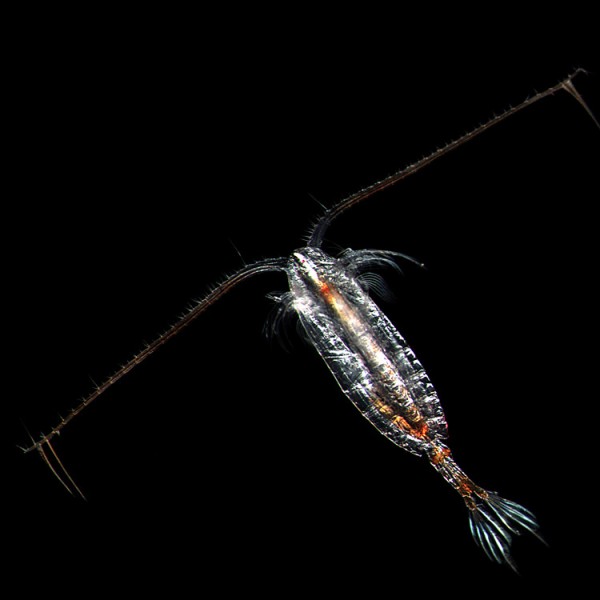Chukchi Sea plankton communities thrive in warmer water
April 13, 2016
Lauren Frisch
907-474-5022
Zooplankton, the tiny animals at the bottom of the food chain, are thriving in the
Chukchi Sea, according to research by University of Alaska Fairbanks scientists. This
is likely due to warming ocean temperatures and longer ice-free seasons.

Elizaveta Ershova, a Ph.D. student at the UAF School of Fisheries and Ocean Sciences, is working with SFOS biological oceanography professor Russell Hopcroft to understand distribution and change in zooplankton communities in the Chukchi Sea, and how zooplankton responds to changes in ocean temperature.
Zooplankton organisms are an important source of food for animals higher up in the food chain, including fish, birds and marine mammals. They drift in the ocean currents and feed on phytoplankton, the tiny algae that photosynthesize to make their own food.
Ershova is part of the Russian American Long-Term Census of the Arctic, or RUSALCA program, one of the only comprehensive studies looking at the oceanography of both Russian and U.S. Chukchi Sea waters. The RUSALCA program is funded by the National Oceanic and Atmospheric Administration. Ershova received additional support through the Encyclopedia of Life Fellowship, the SFOS Robert Byrd competition and the UAF Center for Global Change.
Ershova used data from RUSALCA research expeditions to learn about the kinds of zooplankton that live in the Chukchi Sea. The program led expeditions in 2004, 2009 and 2012.
She found that the Chukchi Sea has distinct zooplankton communities whose distributions are shaped by currents and water masses. As a result, the composition of plankton can reveal the kind of water mass that is present in an area.
“If someone comes to ask me if a water mass is from warm meltwater or Alaska coastal water, I can tell based on the composition of plankton. There are some species that can be found in one kind of water mass and nowhere else.”
Ershova is comparing the modern distribution of plankton in the Chukchi to similar data records going back to the 1940s to determine if there has been a change in biomass of plankton over time.

She found a “very significant increase in the biomass of zooplankton in the Chukchi.” More warm water is flowing into the Chukchi from the Bering Sea, resulting in earlier ice-free periods and longer summer seasons. These conditions may allow zooplankton to thrive in Chukchi waters relative to what was possible 70 years ago. The inflow of water also carries Bering Sea plankton into the Chukchi, which could be responsible for some of the increase in biomass.
The research helps scientists understand how the ecosystem is responding to change. As zooplankton biomass changes, it will likely have ripple effects all the way up the food chain.
“It’s important to continue monitoring both U.S. and Russian waters to keep watching what’s happening in the Chukchi,” said Ershova. “We’re seeing a system change. It’s in the process of changing right now, and it is critical that we continue to study it.”
ON THE WEB: Read more here.


